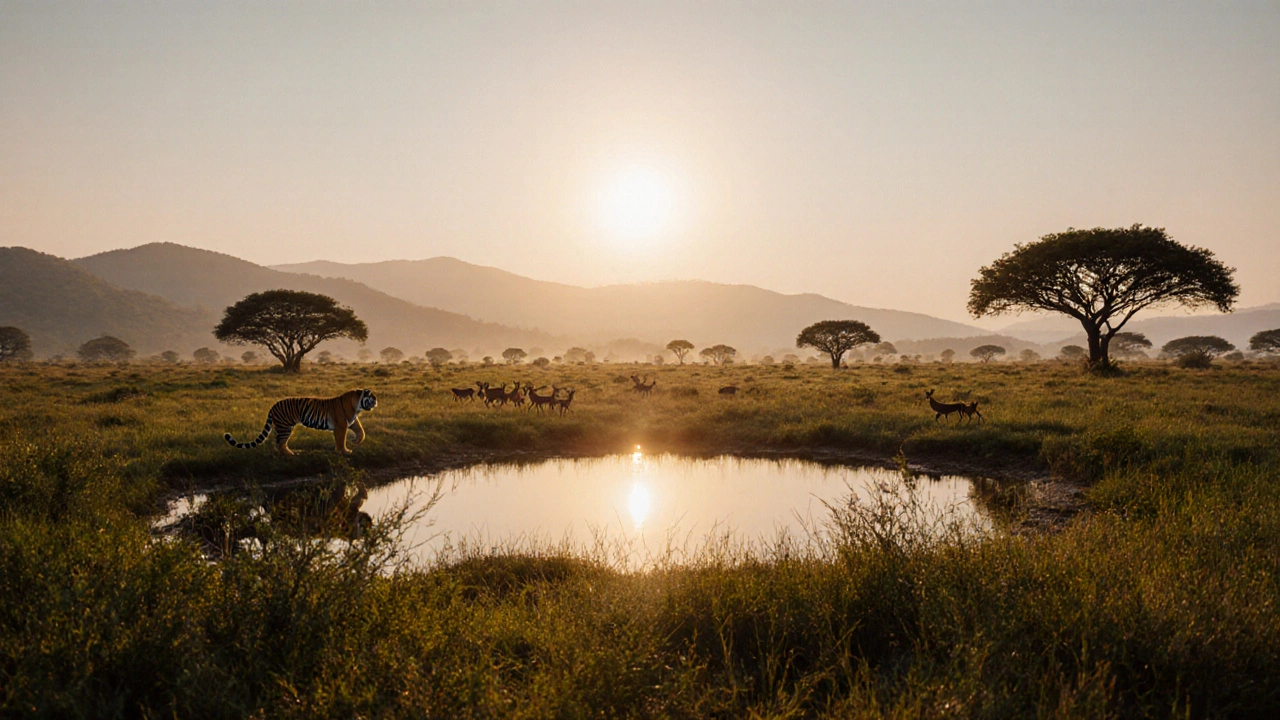
Learn which animals can live in a wildlife sanctuary, the legal rules, common species, and tips for starting or visiting a sanctuary.
When you hear about a Sanctuary Species List, a compiled catalog of animal species that live in protected wildlife areas across India. Also known as species inventory, it helps travelers, researchers, and conservationists see what lives where.
These lists are built around wildlife sanctuaries, designated lands where ecosystems are protected from hunting and development. A sanctuary’s health depends on biodiversity, the variety of plant and animal life that keeps ecosystems resilient. High biodiversity means a sanctuary can support predators, pollinators, and shelter for endangered species. That’s why effective conservation, actions and policies that safeguard habitats and species is essential for any protected area.
First, it gives you a quick snapshot of which animals you might see on a trek. Imagine planning a trip to Madhya Pradesh’s Kanha National Park – the list tells you tigers, leopards, and barasingha are there, so you pack the right gear and set realistic expectations. Second, the list highlights gaps in protection. If a state’s list shows few amphibians, that signals a need for habitat restoration. Third, it supports local economies; tour operators use the data to design wildlife‑focused itineraries that attract birdwatchers, photographers, and eco‑tourists.
India hosts over 100 wildlife sanctuaries, from the mangroves of Sundarbans to the snow‑capped valleys of Uttarakhand. Each sanctuary contributes a unique slice of the country's overall biodiversity. For example, the Western Ghats sanctuary network protects over 500 bird species, while the desert sanctuaries in Rajasthan safeguard the endangered great Indian bustard. By comparing species lists across regions, you can see how climate, altitude, and human pressure shape animal communities.
Creating a reliable sanctuary species list requires field surveys, camera traps, and community reporting. Scientists record sightings, note breeding patterns, and update the list yearly. Mobile apps now let visitors upload photos, adding citizen‑science data to official records. This collaborative approach keeps the list fresh and helps authorities react quickly to emerging threats like poaching or habitat loss.
Travelers can use the list to choose the best time to visit. Many species are seasonal – migratory birds flock to Gujarat’s wetlands in winter, while leopards are more active during the dry months in Pench. Knowing the seasonal patterns lets you plan trips that maximize wildlife encounters while minimizing disturbance.
For students and researchers, the list serves as a baseline for academic projects. Comparing historic data with current lists reveals trends, such as a rise in tiger numbers after anti‑poaching measures or a decline in certain fish species due to water pollution. These insights guide policy reforms and funding priorities.
Policy‑makers also lean on the list when drafting new protected‑area regulations. If a sanctuary’s list shows a high density of endangered reptiles, the government might expand the sanctuary’s boundaries or impose stricter land‑use controls nearby. In this way, the sanctuary species list becomes a decision‑making tool, not just a reference sheet.
From a conservation perspective, the list helps prioritize actions. Species that appear in only a few sanctuaries – like the lion‑tailed macaque in the Western Ghats – become focal points for targeted habitat restoration. Conversely, widespread species might need broader landscape‑level strategies, such as wildlife corridors that connect isolated sanctuaries.
When you compare lists across Indian states, patterns emerge. States like Madhya Pradesh and Karnataka lead with the highest number of protected species, thanks to large contiguous forest blocks. Coastal states like Kerala and Odisha showcase marine and mangrove species, adding a different dimension to biodiversity. Understanding these regional strengths helps tourists plan multi‑state wildlife tours that capture the full spectrum of India’s fauna.
Technology is reshaping how these lists are compiled. Drone surveys map hard‑to‑reach terrains, while AI algorithms sort through thousands of camera‑trap images to identify species automatically. These tools speed up data collection, allowing more frequent updates and finer‑grained mapping of species distributions.
Finally, the sanctuary species list empowers local communities. When villagers see that their forest hosts a rare deer or a charismatic big cat, they are more likely to support conservation initiatives. Community‑led monitoring programs often feed directly into the list, creating a shared sense of stewardship.
Below you’ll find a curated collection of articles that dive deeper into specific sanctuaries, spotlight standout species, and offer practical tips for wildlife‑focused travel across India. Use them to turn the insights from this list into real‑world experiences and actions.

Learn which animals can live in a wildlife sanctuary, the legal rules, common species, and tips for starting or visiting a sanctuary.